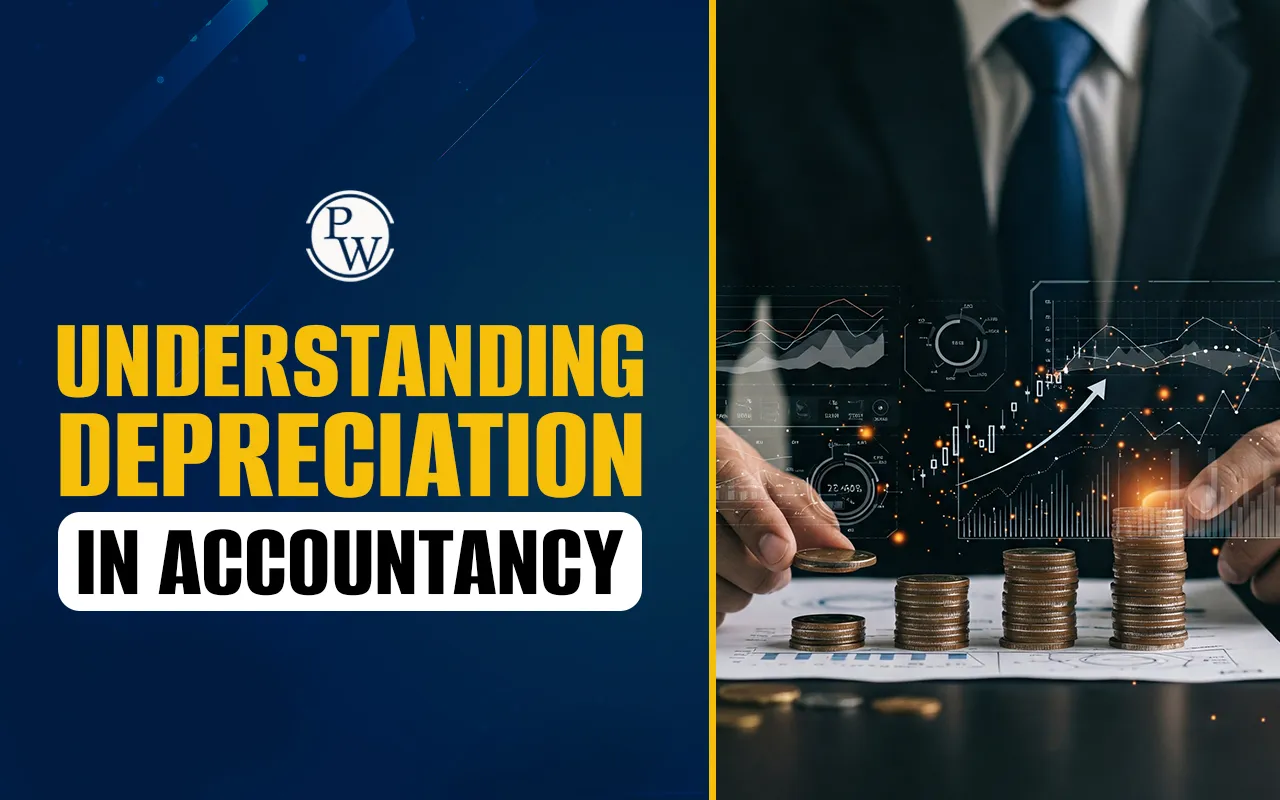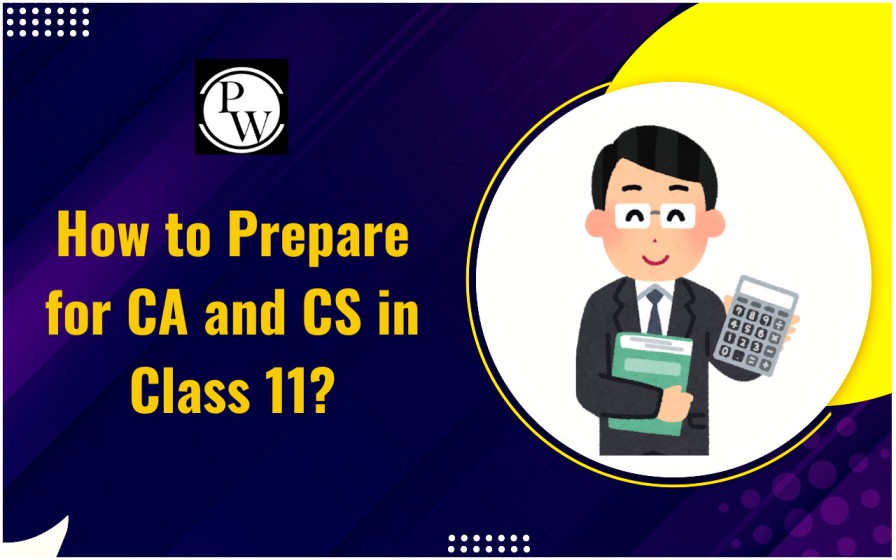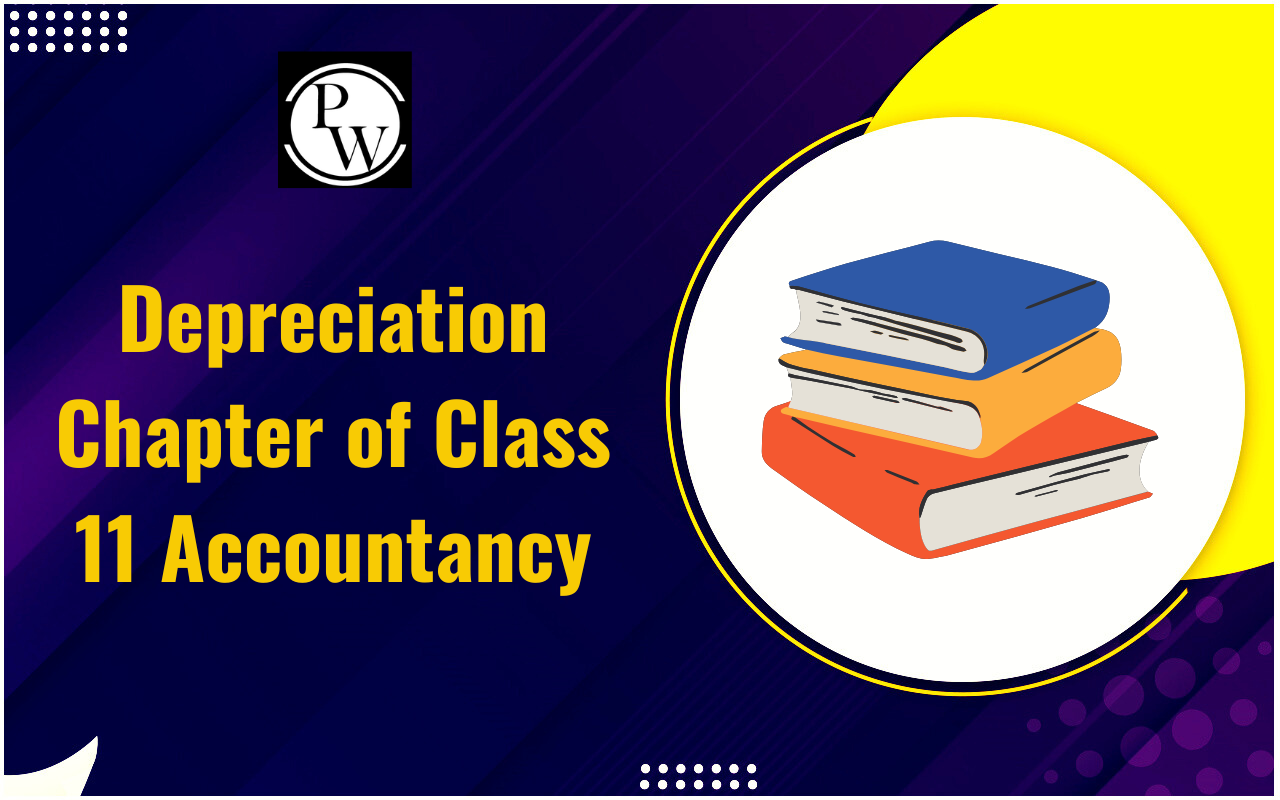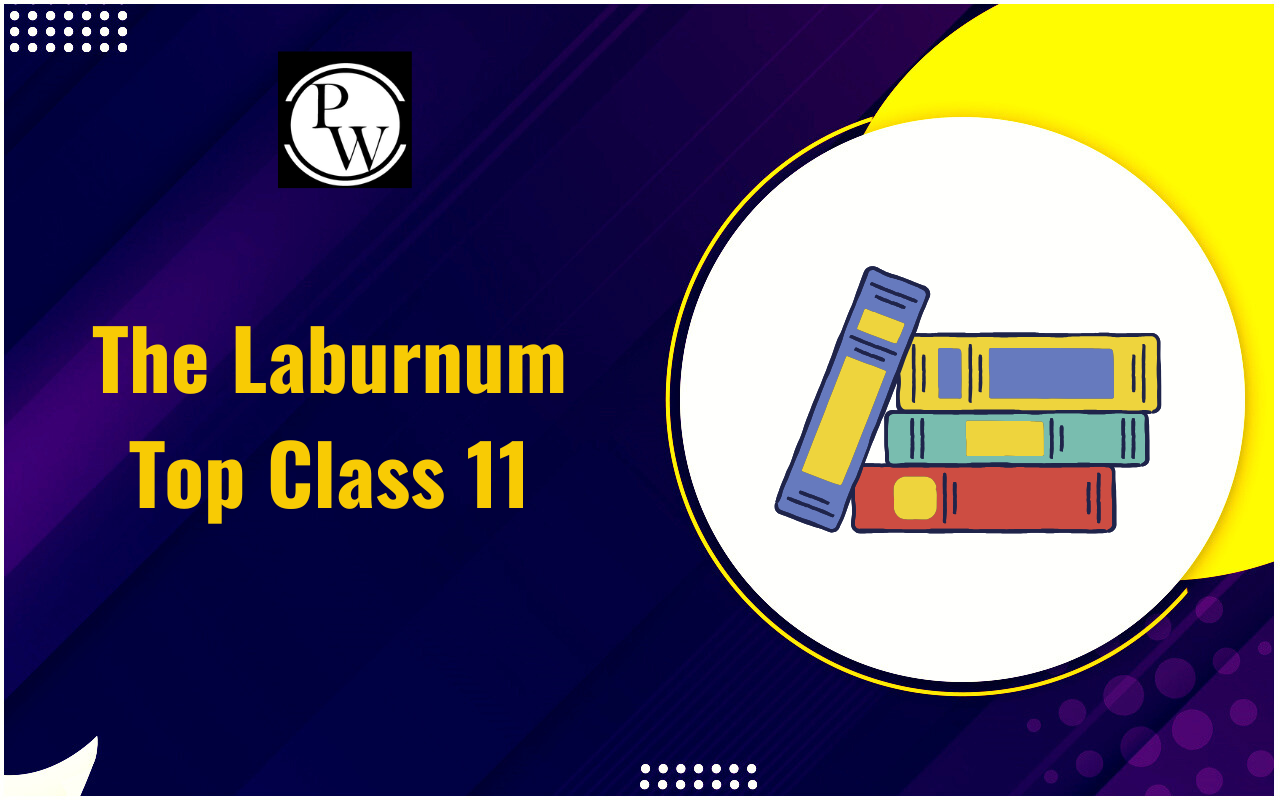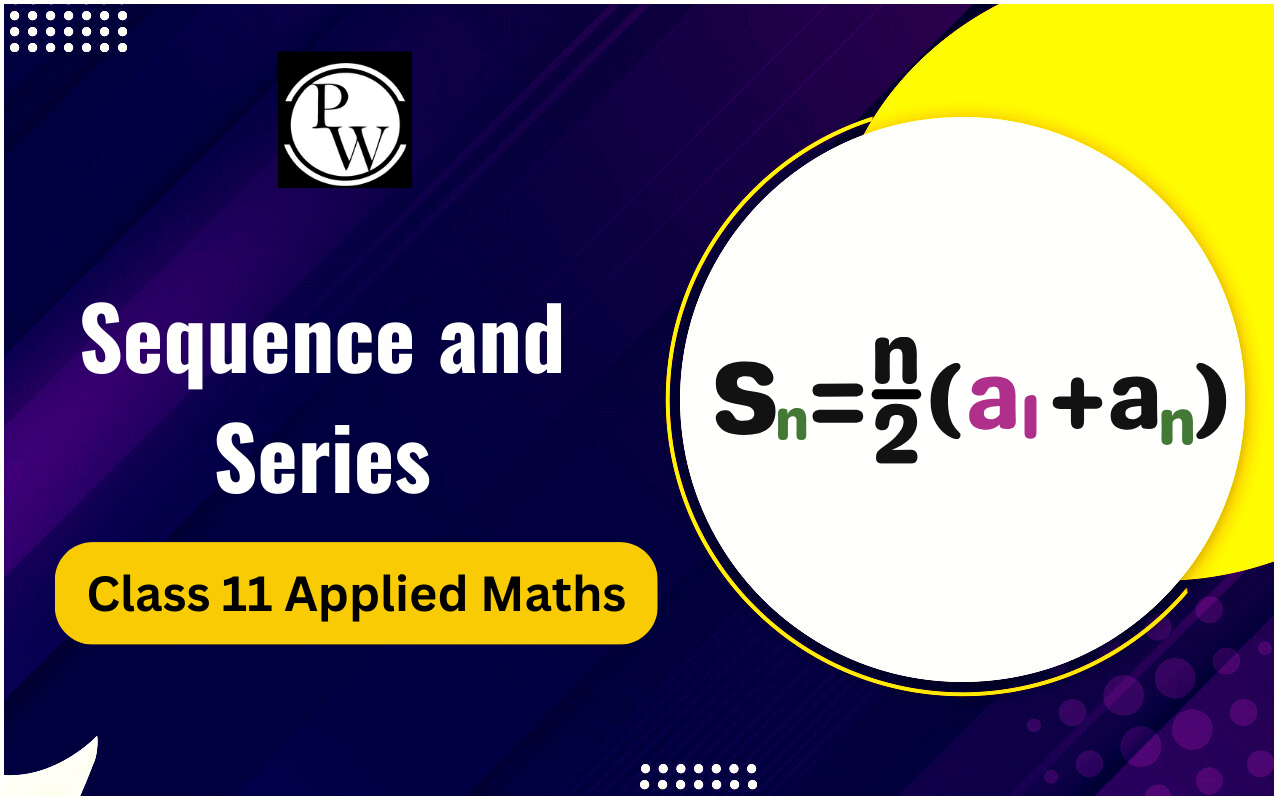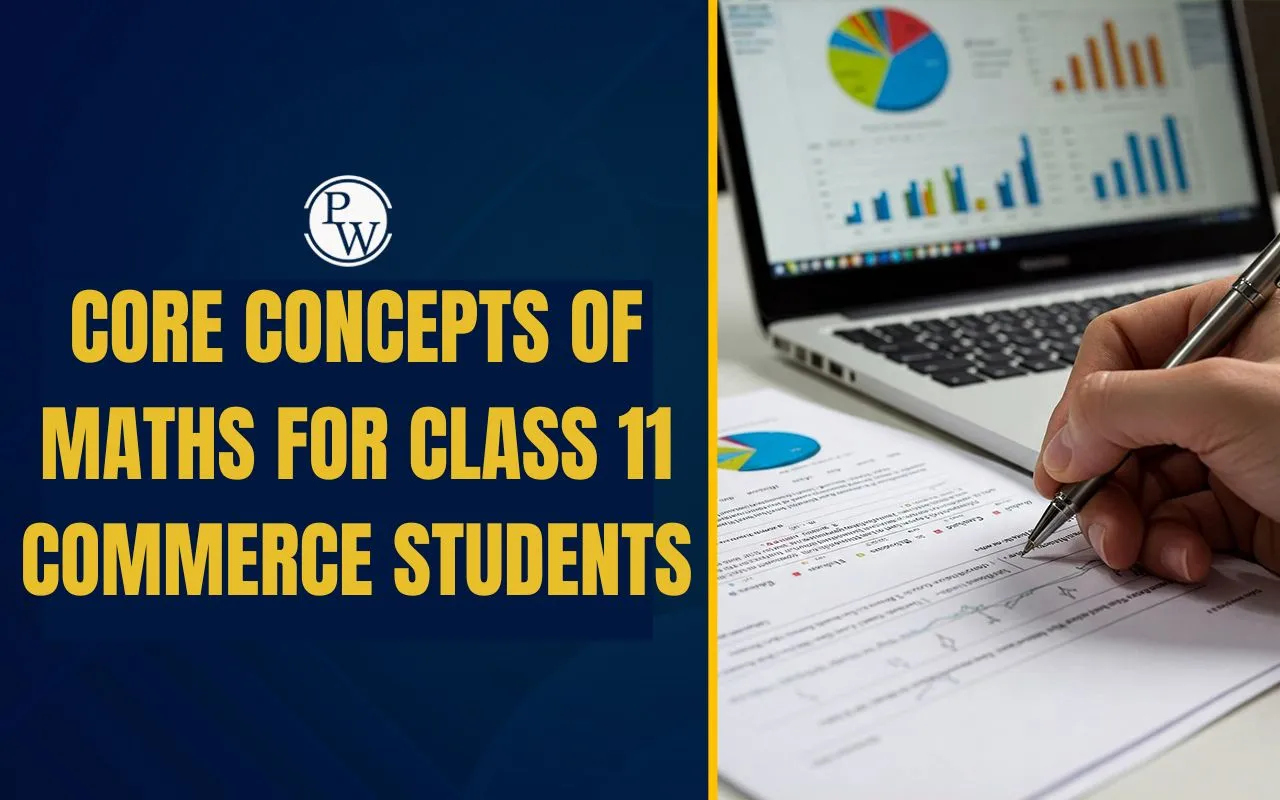
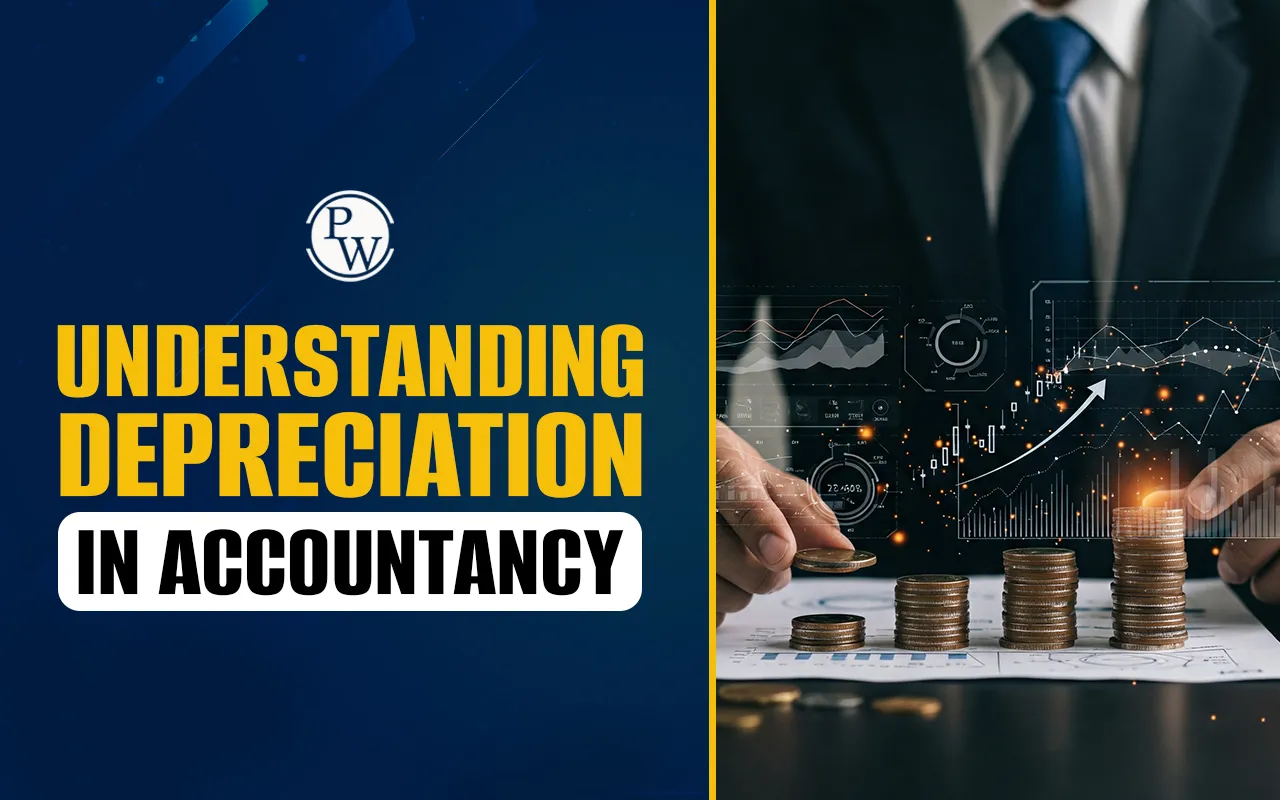
Depreciation Class 11 Accountancy is one of the important topics that helps students in understanding how the value of assets decreases over time. In any business, assets like machines, furniture, or buildings do not last forever. As time passes, these assets start to wear out, get old, or become obsolete. This fall in the value of assets is known as depreciation.
Below, we’ve mentioned the meaning of depreciation class 11 accountancy. Students will also understand the different types of depreciation, including the straight line method and the WDV method.
What is Depreciation?
Depreciation Class 11 Accountancy means the decrease in the value of a fixed asset over time. Fixed assets are long-term assets like computers, buildings, or machines. As these assets are used in the business, they slowly lose their value.
For example, if a company buys a machine and uses it daily, the machine will start to wear down. After some years, it will not work as well as it did when it was new. This drop in value is called depreciation.
Depreciation Class 11 Accountancy also helps students in showing the correct value of assets in the books of account. It tells them how much value the asset has left and how much has already been used.
Importance of Depreciation in Business Accounting
Understanding depreciation is important for many reasons. It helps in:
-
Showing the correct value of assets in the balance sheet: Depreciation allows businesses to present a realistic value of their fixed assets by reducing the asset's cost every year as it loses value due to usage and age.
-
Calculating the true profit of the business: By recording depreciation as an expense, businesses can calculate the actual profit they earn after considering the wear and tear of fixed assets.
-
Making plans to replace old assets in the future: Depreciation helps businesses track how much value an asset has lost and when it might need to be replaced, making it easier to plan for future investments.
-
Reducing the profit, which helps in saving taxes: Since depreciation is shown as an expense, it reduces the total profit. Lower profit means lower taxable income, which helps in managing tax payments more effectively.
Main Reasons for Depreciation
Below, we’ve mentioned the main causes of depreciation:
Continuous use of the asset: When an asset is used daily for business activities, it experiences regular wear. For example, machines used in a factory or delivery vehicles used on roads slowly lose efficiency with time.
Natural wear and tear: Just like clothes or shoes get old with regular use, business assets also wear down naturally. This wear and tear causes the value of the asset to drop over time.
Time or age of the asset: Even if an asset is not used regularly, it can still lose value simply because it is getting older. For instance, a computer kept in storage for years may not work well with new software.
Change in technology: When new and better technology is introduced, older machines or tools become less useful. For example, a shop using an old billing system might need to switch to a faster, modern one.
Accidents or damage: Sometimes, assets get damaged due to accidents or natural events. A machine might break down, or a vehicle might meet with an accident. Such situations reduce the value of the asset quickly.
Methods to Calculate Depreciation
There are different ways to calculate depreciation. In Depreciation Class 11 Accountancy, students will study two major types of depreciation methods:
- Straight Line Method
- WDV Method (Written Down Value Method)
Below, we’ve mentioned both types of depreciation in detail.
1. Straight Line Method (SLM)
In this method, the value of the asset reduces by the same amount every year. It is one of the simplest types of depreciation.
Formula: Depreciation = (Cost of Asset - Scrap Value) / Useful Life
Example: If a company buys a machine for ₹1,00,000 and the expected life is 5 years. The scrap value is ₹10,000.
Then, Depreciation = (₹1,00,000 - ₹10,000) / 5 = ₹18,000 per year
So, every year, ₹18,000 will be reduced from the value of the machine.
In Depreciation Class 11 Accountancy, this method is also known as the fixed amount method.
2. WDV Method (Written Down Value Method)
In this method, the depreciation is calculated on the value of the asset that is left after reducing last year’s depreciation. This means the amount of depreciation becomes less every year.
Formula: Depreciation = Rate of Depreciation x Book Value at the Beginning of the Year
Example: If the asset costs ₹1,00,000 and the depreciation rate is 10%, then:
Year 1: ₹1,00,000 x 10% = ₹10,000
Book value = ₹1,00,000 - ₹10,000 = ₹90,000
Year 2: ₹90,000 x 10% = ₹9,000
In Depreciation Class 11 Accountancy, the WDV method is used when the asset loses more value in the first few years.
Choosing the Right Method to Calculate Depreciation
Both the straight line method and the WDV method are useful in different cases. If the asset gives equal use every year, then the straight line method is better. If the asset gives more benefit in the early years, then the WDV method is more suitable.
Depreciation Class 11 Accountancy explains these methods so that students can choose the right method depending on the nature of the asset.
Difference Between Straight Line Method and WDV Method
In Depreciation Class 11 Accountancy, students compare both methods to see how they work differently:
| Difference Between Straight Line Method and WDV Method | ||
| Point of Difference | Straight Line Method | WDV Method |
| Depreciation amount | Same every year | Decreases every year |
| Asset value | Becomes zero | Never becomes zero |
| Useful for | Assets with equal use | Assets with heavy use early |
Types of Depreciation Methods
Though the straight line method and WDV method are the most common, there are other types of depreciation, too. Some of these are:
- Units of Production Method: Based on the use or output of the asset.
- Sum of Years Digit Method: A bit more complex, used for faster depreciation.
In Depreciation Class 11 Accountancy, the focus is mainly given to the straight line method and WDV method. These are widely used and easy to understand.
Journal Entries for Depreciation
In Depreciation Class 11 Accountancy, students are also taught how to pass journal entries for depreciation:
Entry:
Depreciation A/c Dr.
To Asset A/c
This entry shows that depreciation is an expense and the value of the asset is reducing. Sometimes, depreciation is recorded using a provision account.
Effect of Depreciation on Accounts
Depreciation affects two main accounts:
- It reduces the value of the asset in the balance sheet.
- It is shown as an expense in the profit and loss account.
Depreciation Class 11 Accountancy helps students see how it affects both financial statements.
Depreciation Class 11 Accountancy is an important topic that tells students how the value of assets goes down with time. It helps in keeping the accounts correct and also saves money on tax. By learning about types of depreciation, like the straight line method and WDV method, students can understand how businesses plan for the future.
Keep practicing problems related to depreciation to understand it better. This topic is not only useful for exams but also in real-life business situations.
Join PW Commerce Online Course and unlock your potential with quality education and dedicated learning support.
| Related Links | |
| Commerce Class 11 | Class 11 Accountancy |
| Class 11 Commerce Syllabus | Class 11 English |
| Class 11 Business Studies | Class 11 Economics |
| Class 11 Maths | Class 11 Applied Maths |
Depreciation Class 11 In Accountancy FAQs
What is the meaning of depreciation in Class 11 Accountancy?
What are the different types of depreciation methods taught in Class 11?
How is depreciation calculated using the Straight Line Method?
What is the difference between the Straight Line Method and the WDV Method?

